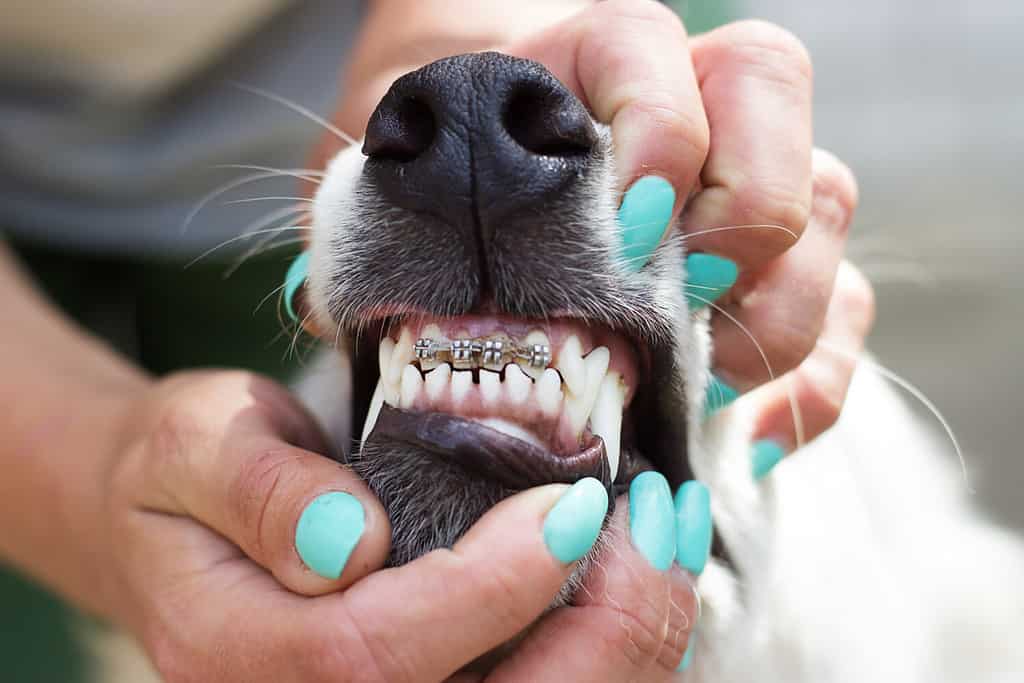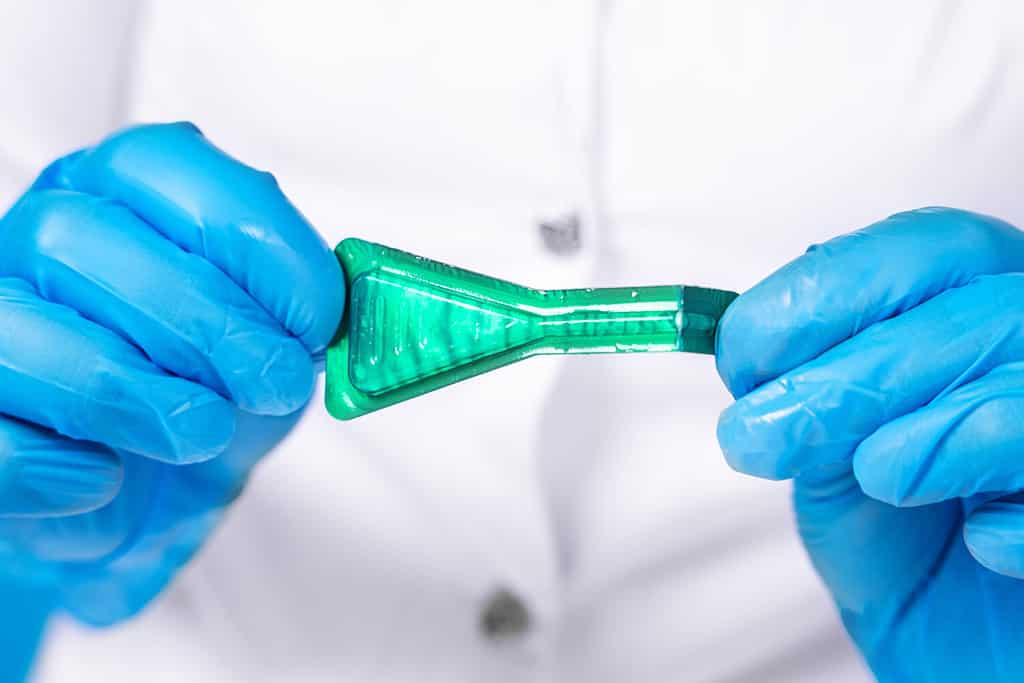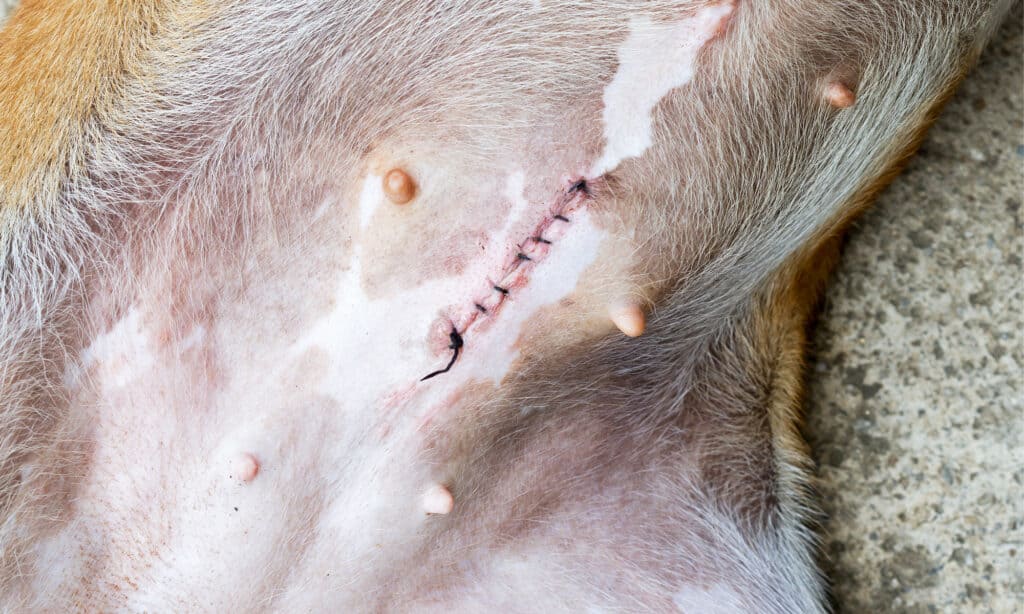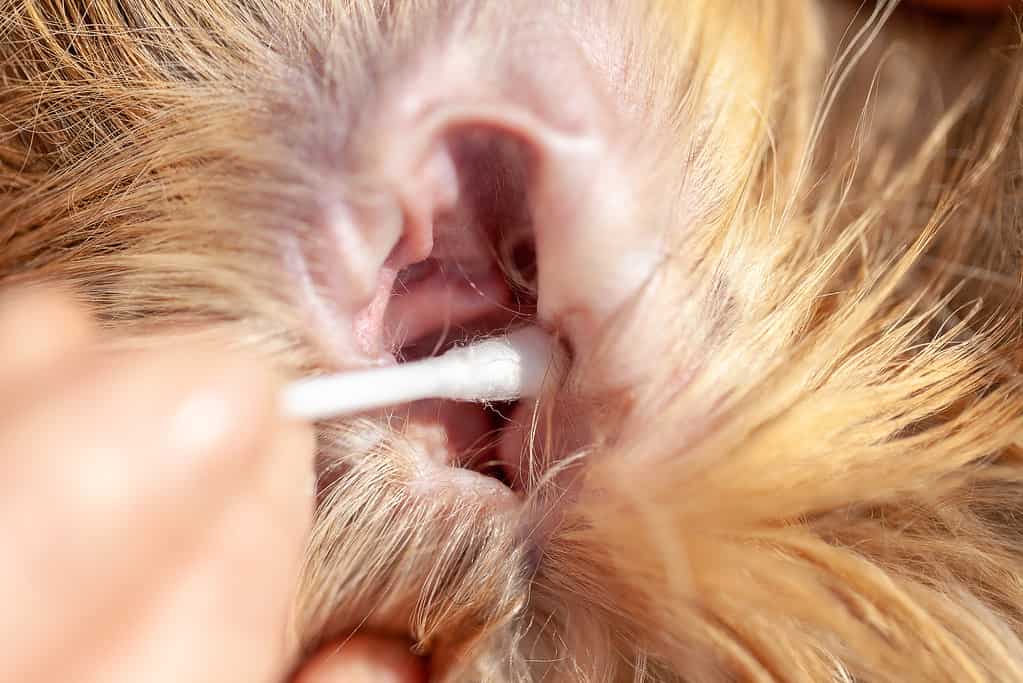The gorgeous Shetland sheepdog, often simply called shelties, are known for their flowing coat, high energy, and their sensitivity. As well as being a devoted family pet, they are also used widely as medical alert dogs, service dogs, and therapy dogs. They were bred to withstand the rigors of working in the remote Shetland Islands off the coast of Scotland, where conditions can be harsh, to say the least. However, there are some health problems that they can suffer from. Here’s a list of the 10 common health problems seen in Shetland sheepdogs.
Dental Health Problems

Shelties can suffer from missing and displaced teeth.
©Happy monkey/Shutterstock.com
Dental disorders in dogs include gum disease, gingivitis (inflammation caused by plaque), periodontitis (tissue damage caused by gum disease), tooth decay, and developmental abnormalities. The majority of dogs will suffer from some sort of dental disease in their lifetime, and this certainly applies to shelties. You can prevent a lot of problems by cleaning your dog’s teeth regularly.
Dental anomalies in shelties are also common and it is not unusual for them to be missing permanent teeth. In particular, premolars and molars are often missing. Sometimes, permanent teeth erupt within the hard palate, and the canine teeth can be displaced, which makes them ‘stick out’ through the lips. These dental anomalies can increase debris and plaque accumulation and make gingivitis more likely.
Inherited Eye Diseases (CEA & GPRA)

Inherited eye disease can be a health problem in shelties.
©molka/iStock via Getty Images
Collie Eye Anomaly (CEA) is also known as choroidal hypoplasia (CH) and is an inherited eye disease that can affect shelties. It affects the choroid which is the layer of tissue in the eye that transports blood to the retina. Studies have indicated that between 15 and 72 percent of shelties carry the mutated gene that causes this condition. There is a DNA test for this gene.
Generalized Progressive Retinal Atrophy (GPRA) is another inherited eye condition where the special cells in the retina deteriorate and eventually stop working. It can start at anything from two to nine years of age and will eventually result in blindness. There are two variants of the gene responsible for GPRA and one causes an earlier onset than the other. Both genes can be identified with a DNA test.
Hip Dysplasia

Some shelties can develop hip dysplasia.
©Intarapong/Shutterstock.com
Hip dysplasia can affect some shelties, and some breeders are now getting their breeding stock hip-scored. It causes the ball and socket of the hip joint to not fit together correctly or to not develop properly. Eventually, the joint ceases to function, and the dog struggles to move around. Excessive weight gain and unbalanced nutrition can make this genetic predisposition worse. It can be treated with anything from joint supplements to surgery.
Adverse Reactions to Drugs

Shelties can have adverse reactions to some common drugs, including Ivermectin.
©Masarik/Shutterstock.com
Some dog breeds, including the sheltie, can have a genetic mutation that makes them unable to produce a protein (P-glycoprotein) which is essential for moving drugs and toxins around the central nervous system. This results in some drugs accumulating and causing neurological symptoms such as tremors, excessive salivation, and even death. Ivermectin, an anti-parasitic medication, is one such drug, but there are several others, including some anti-diarrheal and antibiotic medications. The condition is often referred to as MDR1. Whilst the incidence of this condition in the US is low, some preliminary studies in the UK suggest that up to half of the Shetland sheepdogs there are affected.
Dermatomyositis (DM or FCD)

Sheltie skin syndrome can affect the face, ears, legs, and tail.
©Lina Novotna/Shutterstock.com
Dermatomyositis, often called DM, DMS, or ‘sheltie skin syndrome’ is an inherited autoimmune disease. It causes a very nasty inflammation in the skin and muscle. Skin lesions often occur on the face, ears, legs, and the tip of the tail and look red, scaly, and crusty. Muscle involvement can result in muscle wastage and problems with eating. It usually develops in the first few years of life and can be triggered by stress, hormones, or an infection. Even though it is a genetic problem, many dogs develop it after travel, a move, or a family upset. There are several treatment options, including steroids, but it can take a while to find what works.
Gallbladder Mucocele

Gallbladder mucocele in shelties can cause decreased appetite.
©Filmbildfabrik/Shutterstock.com
This is a condition where the gallbladder distends because there is an excessive accumulation of mucus. It results from a complicated set of factors that result in inflammation and changes to the lining of the gallbladder. It causes decreased appetite, lethargy, vomiting, and diarrhea. Sometimes, the gallbladder needs to be removed. Research has shown that shelties are predisposed to this condition.
Epilepsy

Purebred Shetland sheepdogs may have a genetic predisposition towards epilepsy.
©yanjf/iStock via Getty Images
Epilepsy is more common in some breeds of dogs, and shelties may be one of them. It is most likely to start in this breed between 1 year and 1.5 years of age, and the dogs get between one seizure a week and one every six months. Females are four times more likely to get it than males, and it is likely linked to a genetic mutation, although the exact gene has not been isolated. In many dogs, it can be controlled with medication.
von Willebrand’s disease (vWD)

Bleeding disorder in shelties can make surgery more complicated.
©iStock.com/akwitps
von Willebrand’s disease (vWD) occurs in dogs (and humans) that do not have a particular blood glycoprotein that is needed for clotting. There are three types of the diseases and five potential genetic mutations that cause them. Type III is the most serious and involves life-threatening bleeding. This is also the type associated with Shetland sheepdogs.
Thyroid Disease

Dogs can suffer from several types of thyroid disease.
©yanjf/iStock via Getty Images
Dogs can develop a disorder of the thyroid gland (located in the neck) that makes it produce too much or too little thyroid hormones. When there is too little thyroid hormone, it is called hypothyroidism, and the dog’s metabolism slows, whereas in hyperthyroidism (too much hormone), it speeds up. Some dogs are also predisposed to autoimmune thyroiditis, and shelties may be one of those breeds.
Allergies

Shetland sheepdogs can suffer from ear problems caused by allergies.
©huettenhoelscher/iStock via Getty Images
Dogs can suffer from allergies in the same way as humans. The most common symptom for them is itching and it is a common health problem in Shetland sheepdogs. In particular, their feet, belly, and skin are affected. The symptoms are likely to start between the ages of one and three but often get worse as the dog ages. This is one of the most common health problems seen in Shetland sheepdogs. You may notice your sheltie licking their paws or getting frequent ear infections. There are plenty of treatment and management options, so speak to your vet as soon as possible.
The photo featured at the top of this post is © Rita_Kochmarjova/Shutterstock.com
Ready to discover the top 10 cutest dog breeds in the entire world?
How about the fastest dogs, the largest dogs and those that are -- quite frankly -- just the kindest dogs on the planet? Each day, AZ Animals sends out lists just like this to our thousands of email subscribers. And the best part? It's FREE. Join today by entering your email below.
Thank you for reading! Have some feedback for us? Contact the AZ Animals editorial team.






